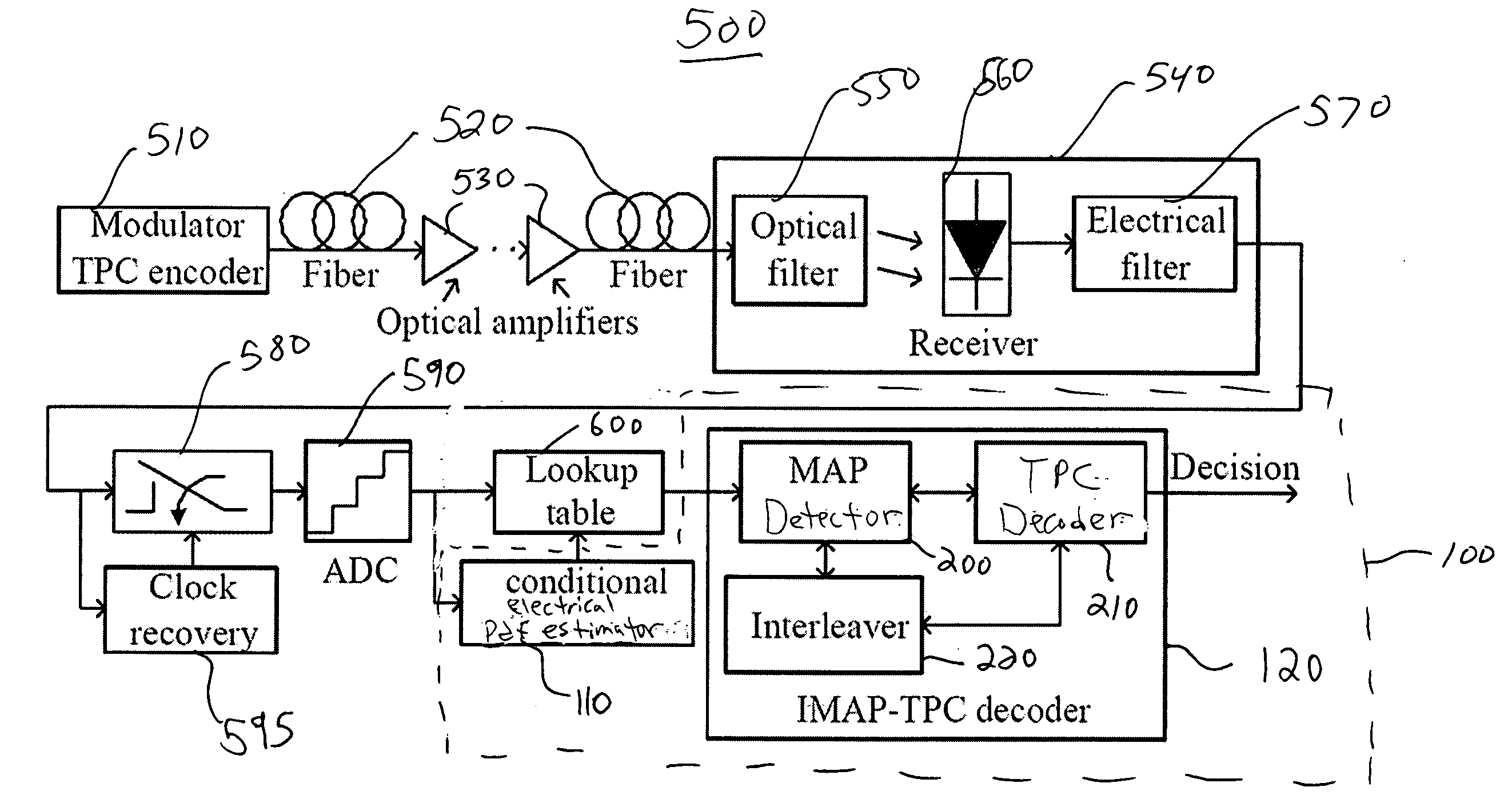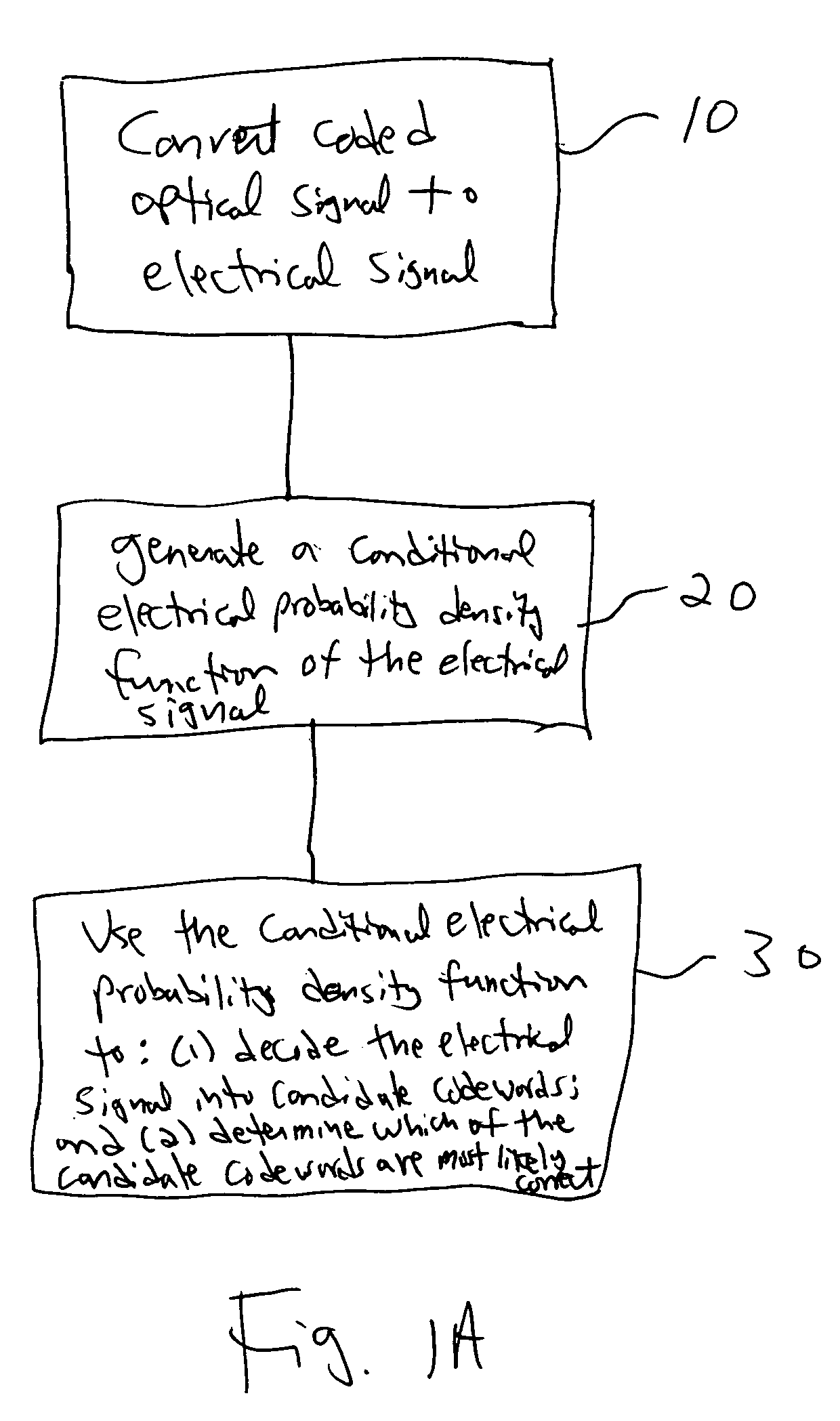Integrated maximum a posteriori (MAP) and turbo product coding for optical communications systems
a technology of optical communication system and product coding, applied in the field of optical fiber communication system, can solve the problems of preventing such system designs from being commercially deployed, system power limitation at the high end, and physical impairment of optical fiber transmission lines, so as to improve the performance of fiber optic communication system and improve the bit error rate (ber)
- Summary
- Abstract
- Description
- Claims
- Application Information
AI Technical Summary
Benefits of technology
Problems solved by technology
Method used
Image
Examples
Embodiment Construction
[0036] To upgrade the capacity of existing optical fiber communications systems, it is simply not practical to install newly designed and optimized systems, since the cost of installing new fiber spans and amplifier huts is prohibitive. The only cost effective approach for overcoming this major barrier to the massive deployment of optical fiber communications in WDM networks is to upgrade the transmitters and receivers. Consequently, a major thrust in the field has been to start using solutions in the electrical domain such as equalization and coding. Because of the finite bandwidth of the optical amplifiers, the only way to increase capacity is to increase spectral efficiency. For this reason, sophisticated, highly-spectrally efficient modulation formats are becoming increasingly attractive. Such formats include vestigial sideband (VSB) modulation, quadrature and differential phase shift keying (QPSK and DPSK), and duobinary signaling. Additional gains in spectral efficiency could ...
PUM
 Login to View More
Login to View More Abstract
Description
Claims
Application Information
 Login to View More
Login to View More - R&D
- Intellectual Property
- Life Sciences
- Materials
- Tech Scout
- Unparalleled Data Quality
- Higher Quality Content
- 60% Fewer Hallucinations
Browse by: Latest US Patents, China's latest patents, Technical Efficacy Thesaurus, Application Domain, Technology Topic, Popular Technical Reports.
© 2025 PatSnap. All rights reserved.Legal|Privacy policy|Modern Slavery Act Transparency Statement|Sitemap|About US| Contact US: help@patsnap.com



